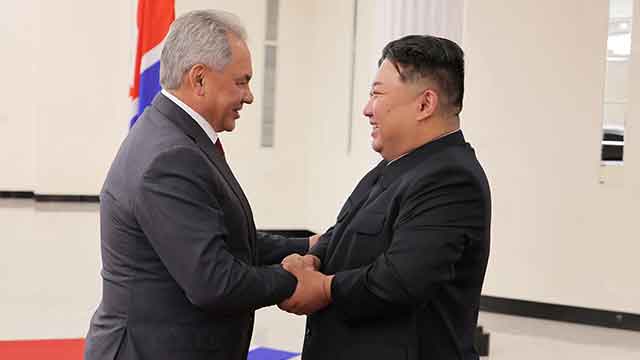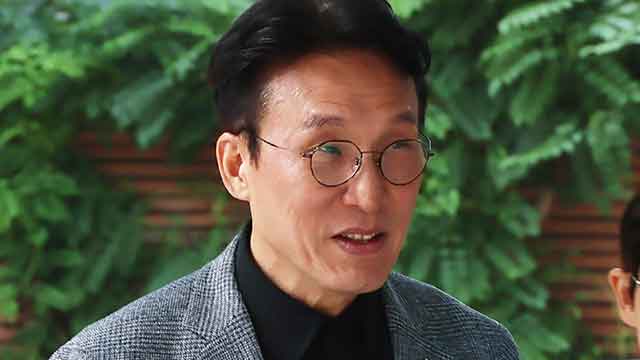[Anchor]
In Gongju, Chungcheongnam-do, there are several royal tombs, including the tomb of King Muryeong of Baekje.
For nearly 100 years, it remained an unnamed royal tomb, but one of them has found its owner.
This is a report by Kim Hye-joo.
[Report]
In the summer of 1971, the Korean archaeological community was filled with excitement.
[“Hey, Mr. Yoon! Tell Yoon Hong-ro to bring the timeline!”]
The tomb of King Muryeong, the 25th king of Baekje, had not been looted.
[“What king is it? 526 AD. It’s King Muryeong of Baekje, King Muryeong!”]
Thousands of artifacts were unearthed.
[The late Kim Won-ryong/Former Director of the National Museum of Korea: “This is the first time we have a tomb with a very certain dating and the name of the king…”]
However, four tombs to the northeast of the Muryeong tomb were damaged by looting and remained unnamed for nearly 100 years.
Among them, tomb number 2 found its owner after 98 years.
The crucial clue was two molars discovered during the re-examination process.
[Lee Woo-young/Professor, Department of Anatomy at the Catholic University of Korea: “The second small molar seems to have very little wear, indicating it was likely a teenager’s tooth…”]
It belonged to King Samgeun, the only teenager among the direct descendants of King Gaero, the 21st king of Baekje.
He was the cousin of King Muryeong and was a tragic king who was murdered at the age of 15, just two years after ascending the throne.
Based on this, the adjacent tomb number 1 is also presumed to be that of a direct royal descendant.
[Hwang In-ho/Director of the Buyeo National Research Institute of Cultural Heritage: “King Munju (his father) and King Samgeun are direct descendants of King Gaero, and the time difference in their deaths is only two years. From an archaeological perspective, the tomb of that king is adjacent, and the scale and structure are likely very similar…”]
Glass beads found together showed traces of lead from Thailand.
This evidence indicates that trade networks extended to Southeast Asia, even amid the unstable political situation after the capital relocation.
This is KBS News, Kim Hye-joo.
In Gongju, Chungcheongnam-do, there are several royal tombs, including the tomb of King Muryeong of Baekje.
For nearly 100 years, it remained an unnamed royal tomb, but one of them has found its owner.
This is a report by Kim Hye-joo.
[Report]
In the summer of 1971, the Korean archaeological community was filled with excitement.
[“Hey, Mr. Yoon! Tell Yoon Hong-ro to bring the timeline!”]
The tomb of King Muryeong, the 25th king of Baekje, had not been looted.
[“What king is it? 526 AD. It’s King Muryeong of Baekje, King Muryeong!”]
Thousands of artifacts were unearthed.
[The late Kim Won-ryong/Former Director of the National Museum of Korea: “This is the first time we have a tomb with a very certain dating and the name of the king…”]
However, four tombs to the northeast of the Muryeong tomb were damaged by looting and remained unnamed for nearly 100 years.
Among them, tomb number 2 found its owner after 98 years.
The crucial clue was two molars discovered during the re-examination process.
[Lee Woo-young/Professor, Department of Anatomy at the Catholic University of Korea: “The second small molar seems to have very little wear, indicating it was likely a teenager’s tooth…”]
It belonged to King Samgeun, the only teenager among the direct descendants of King Gaero, the 21st king of Baekje.
He was the cousin of King Muryeong and was a tragic king who was murdered at the age of 15, just two years after ascending the throne.
Based on this, the adjacent tomb number 1 is also presumed to be that of a direct royal descendant.
[Hwang In-ho/Director of the Buyeo National Research Institute of Cultural Heritage: “King Munju (his father) and King Samgeun are direct descendants of King Gaero, and the time difference in their deaths is only two years. From an archaeological perspective, the tomb of that king is adjacent, and the scale and structure are likely very similar…”]
Glass beads found together showed traces of lead from Thailand.
This evidence indicates that trade networks extended to Southeast Asia, even amid the unstable political situation after the capital relocation.
This is KBS News, Kim Hye-joo.
■ 제보하기
▷ 카카오톡 : 'KBS제보' 검색, 채널 추가
▷ 전화 : 02-781-1234, 4444
▷ 이메일 : kbs1234@kbs.co.kr
▷ 유튜브, 네이버, 카카오에서도 KBS뉴스를 구독해주세요!
- Recording of tomb dig released
-
- 입력 2025-06-18 01:15:36

[Anchor]
In Gongju, Chungcheongnam-do, there are several royal tombs, including the tomb of King Muryeong of Baekje.
For nearly 100 years, it remained an unnamed royal tomb, but one of them has found its owner.
This is a report by Kim Hye-joo.
[Report]
In the summer of 1971, the Korean archaeological community was filled with excitement.
[“Hey, Mr. Yoon! Tell Yoon Hong-ro to bring the timeline!”]
The tomb of King Muryeong, the 25th king of Baekje, had not been looted.
[“What king is it? 526 AD. It’s King Muryeong of Baekje, King Muryeong!”]
Thousands of artifacts were unearthed.
[The late Kim Won-ryong/Former Director of the National Museum of Korea: “This is the first time we have a tomb with a very certain dating and the name of the king…”]
However, four tombs to the northeast of the Muryeong tomb were damaged by looting and remained unnamed for nearly 100 years.
Among them, tomb number 2 found its owner after 98 years.
The crucial clue was two molars discovered during the re-examination process.
[Lee Woo-young/Professor, Department of Anatomy at the Catholic University of Korea: “The second small molar seems to have very little wear, indicating it was likely a teenager’s tooth…”]
It belonged to King Samgeun, the only teenager among the direct descendants of King Gaero, the 21st king of Baekje.
He was the cousin of King Muryeong and was a tragic king who was murdered at the age of 15, just two years after ascending the throne.
Based on this, the adjacent tomb number 1 is also presumed to be that of a direct royal descendant.
[Hwang In-ho/Director of the Buyeo National Research Institute of Cultural Heritage: “King Munju (his father) and King Samgeun are direct descendants of King Gaero, and the time difference in their deaths is only two years. From an archaeological perspective, the tomb of that king is adjacent, and the scale and structure are likely very similar…”]
Glass beads found together showed traces of lead from Thailand.
This evidence indicates that trade networks extended to Southeast Asia, even amid the unstable political situation after the capital relocation.
This is KBS News, Kim Hye-joo.
In Gongju, Chungcheongnam-do, there are several royal tombs, including the tomb of King Muryeong of Baekje.
For nearly 100 years, it remained an unnamed royal tomb, but one of them has found its owner.
This is a report by Kim Hye-joo.
[Report]
In the summer of 1971, the Korean archaeological community was filled with excitement.
[“Hey, Mr. Yoon! Tell Yoon Hong-ro to bring the timeline!”]
The tomb of King Muryeong, the 25th king of Baekje, had not been looted.
[“What king is it? 526 AD. It’s King Muryeong of Baekje, King Muryeong!”]
Thousands of artifacts were unearthed.
[The late Kim Won-ryong/Former Director of the National Museum of Korea: “This is the first time we have a tomb with a very certain dating and the name of the king…”]
However, four tombs to the northeast of the Muryeong tomb were damaged by looting and remained unnamed for nearly 100 years.
Among them, tomb number 2 found its owner after 98 years.
The crucial clue was two molars discovered during the re-examination process.
[Lee Woo-young/Professor, Department of Anatomy at the Catholic University of Korea: “The second small molar seems to have very little wear, indicating it was likely a teenager’s tooth…”]
It belonged to King Samgeun, the only teenager among the direct descendants of King Gaero, the 21st king of Baekje.
He was the cousin of King Muryeong and was a tragic king who was murdered at the age of 15, just two years after ascending the throne.
Based on this, the adjacent tomb number 1 is also presumed to be that of a direct royal descendant.
[Hwang In-ho/Director of the Buyeo National Research Institute of Cultural Heritage: “King Munju (his father) and King Samgeun are direct descendants of King Gaero, and the time difference in their deaths is only two years. From an archaeological perspective, the tomb of that king is adjacent, and the scale and structure are likely very similar…”]
Glass beads found together showed traces of lead from Thailand.
This evidence indicates that trade networks extended to Southeast Asia, even amid the unstable political situation after the capital relocation.
This is KBS News, Kim Hye-joo.
-
-

김혜주 기자 khj@kbs.co.kr
김혜주 기자의 기사 모음
-
이 기사가 좋으셨다면
-
좋아요
0
-
응원해요
0
-
후속 원해요
0















이 기사에 대한 의견을 남겨주세요.